
Lower Austria is one of the nine states of Austria, located in the northeastern corner of the country. Major cities are Amstetten, Krems an der Donau, Wiener Neustadt and Sankt Pölten, which has been the capital of Lower Austria since 1986, replacing Vienna, which became a separate state in 1921. With a land area of 19,186 km2 (7,408 sq mi) and a population of 1.7 million people, Lower Austria is the largest and second-most-populous state in Austria.
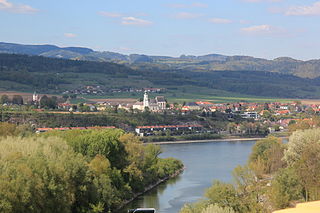
Bezirk Melk is a district of the state of Lower Austria in Austria.

Ybbs an der Donau is a town in Austria. It was established in 1317. Throughout the town, from the intersection of the important trade routes and along the Danube the town has preserved a site that already had great economic importance during the Middle Ages.

Ybbs is a river in Lower Austria. Its drainage basin is 1,291 km2 (498 sq mi).
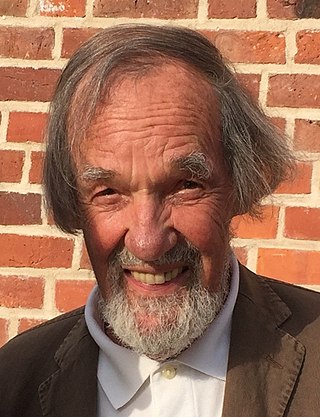
Jürgen Ahrend was a German organ builder famous for restoring instruments such as the Gothic Rysum organ and the Arp Schnitger organs of the Martinikerk in Groningen, Netherlands, and of St. Jacobi in Hamburg as well as building original instruments. He ran the workshop Jürgen Ahrend Orgelbau in Leer from 1972 to 2004, operating internationally.
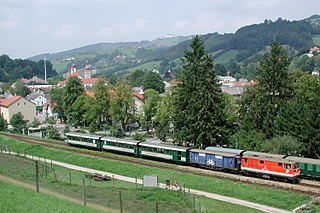
The Ybbs Valley Railway was a narrow-gauge railway of the Austrian Federal Railways with a track gauge of 760 mm, located in the Lower Austrian Mostviertel.

The Merkenstein ruins are the remains of a castle in Lower Austria near Bad Vöslau in the Großau cadastre. In some sources, it is mentioned as early as the year 1141. The first definite mention is in the Codex Falkensteinensis in 1170. Ludwig van Beethoven dedicated two Lieder to the ruin.
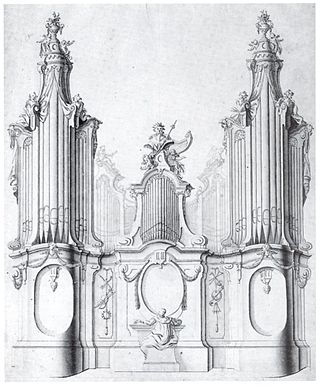
Organ building is the profession of designing, building, restoring and maintaining pipe organs.

Matthias Laurenz Gräff is an Austrian-Greek academic painter, private historian, politician, political activist and co-founder and organizer of the non-partisan platform Dialog im Kamptal. Since 2013 Gräff has served as chairman of the worldwide Family Association Gräff-Graeff and since 2024 as the official Representative of the NEOS parliamentary party for Greece.
Orgelbau Pirchner is an Austrian manufacturer of pipe organs, located in Steinach am Brenner, Tirol.
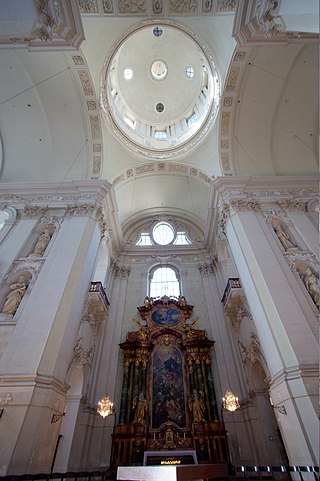
The Kollegienkirche in Salzburg, Austria, is the church of the University of Salzburg. It was built in Baroque style by Johann Bernhard Fischer von Erlach. Dedicated to the Immaculate Conception, it is part of the UNESCO World Heritage Site Historic Centre of Salzburg. It is now both the parish church of people connected to the university and a venue of the Salzburg Festival.
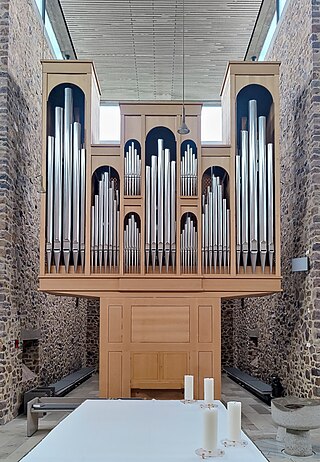
Orgelbau Mebold is a company building pipe organs in Siegen, Germany. It was founded in 1967 by Hans Peter Mebold, and has been run since 2018 by his son Mathias Mebold. The company builds new organs, restores historic instruments, and specializes in portable small instruments (Truhenorgel).
Carl August Buchholz was a German organ builder.
Gottlieb Scholtze was a German pipe organ builder. He had his workshop in Neuruppin since 1740. He was a pupil of Joachim Wagner. Along with Ernst Julius Marx and Johann Wilhelm Grüneberg, he is considered the most important organ builder in the Mark Brandenburg in the second half of the 18th century. A total of 32 new buildings are recorded by him, including the organ of the parish church in Küstrin.

Ernst Julius Marx was an important German organ builder in Berlin. He worked in the tradition of Joachim Wagner.
Johann Dietrich Kuhlmann was a German organ builder. As son-in-law and successor of Johann Stephan Heeren, he worked in Gottsbüren.

Wolf Bergelt is a German author, organist and organ scholar.

Johann Haselböck was an Austrian organist, composer, author and academic teacher. He was organist at the Dominican Church, Vienna, for 65 years, and was professor of organ and improvisation at the Vienna Music Academy, where he later also served as head of the faculty of church music and as deputy rector. He gave organ concerts in Europe, North America, and the Near and Far East. Haselböck is regarded as a pioneer of Catholic church music in the German language after the Second Vatican Council.
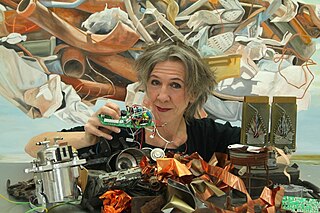
Maria Temnitschka is an Austrian artist. At the beginning of her artistic career Maria Temnitschka designed and created jewellery and objects made of metal. Later she reoriented to painting - at first abstract, since 2000 figurative representation. Her preferred techniques are oil painting, drawing, experimental photography, object art.

























